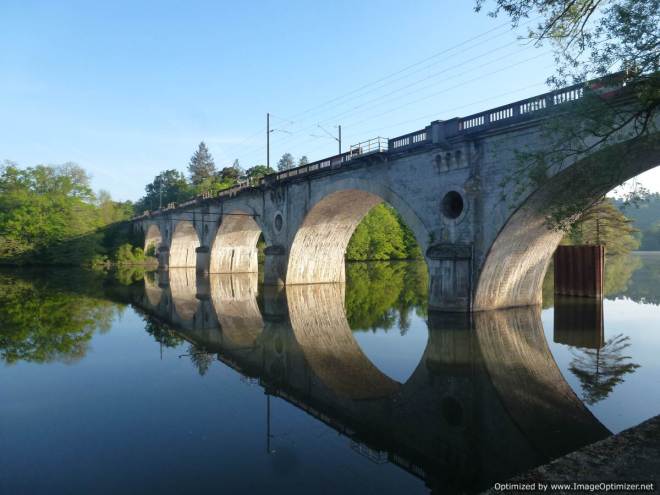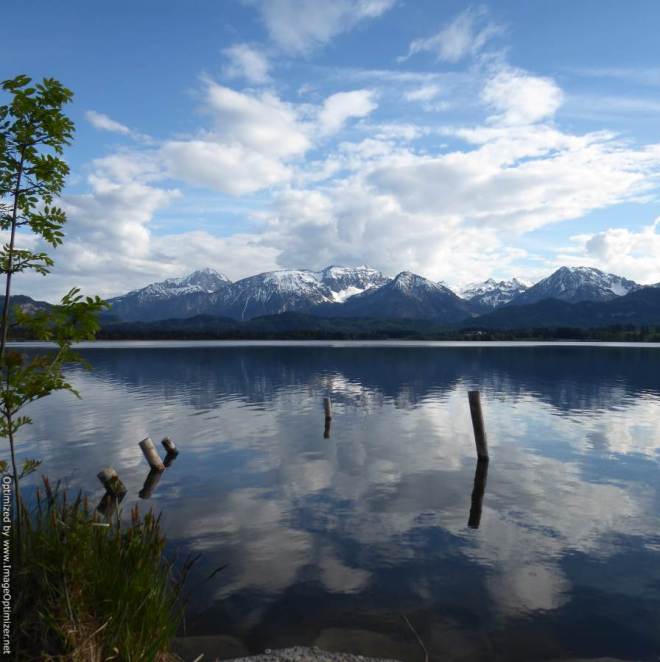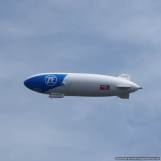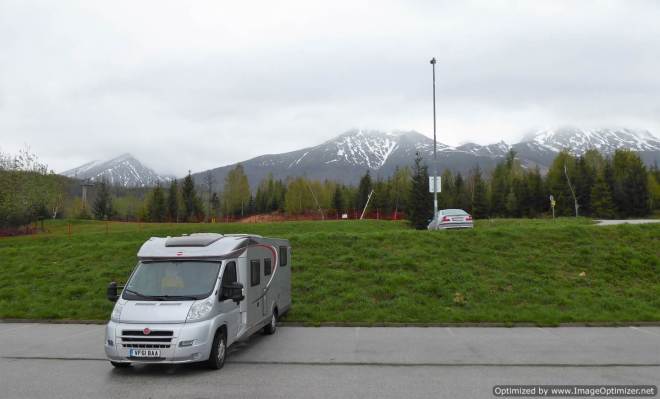 As we entered France crossing the border into the Alsace region, we had no idea that the Germans called the country Frankreich!
As we entered France crossing the border into the Alsace region, we had no idea that the Germans called the country Frankreich!
We were also shocked to see diesel at over €1.55 per litre and petrol even more plus we have re-entered the land where beer is now around €5 per 500ml, almost 5 times what we had been paying in Eastern Europe only a couple of weeks ago.
Three years ago we visited this beautiful region of France, situated between the Rhine River plain and the Vosges Mountains and have fond memories as it was our first motorhome trip. We were happy to have the chance to explore a couple more of the many medieval towns and villages surrounded by vineyards on the Alsace Wine Route, randomly choosing Kayserberg and Riquewihr.
We found they were two very similar towns, both featuring half-timbered houses, picturesque narrow cobbled streets, shops selling all sorts of tourist tat and inevitably an abundance of different wine houses. It was lovely to wander around and make comparisons with the buildings in the medieval towns we had recently visited in Germany.
Remembering a good campsite in Eguisheim, we parked up for the night and took the opportunity to have another explore of this remarkable medieval town which is built in concentric circles so it’s very easy to become disorientated.
Pouring rain moved us on the following day and a 2½ hour drive northwest took us to the sunshine and a campsite near Nancy in the Moselle wine region. The nearby town Liverdun boasted a ‘historical walk’ to take in the sights which of course we did but sadly it was all very uninspiring and lacking in character, it was so quiet that the only indication that humans lived there were the cars parked in the old streets.
Despite the disappointing town the campsite was charming with great facilities and situated right beside the Moselle River, we stayed two nights enjoying the sunshine and a chance to get the awning opened and set up our table and chairs for the first time this trip.
 The next day despite a very long driving day to Calais it was a delight to be on the open quiet roads of France which was looking particularly gorgeous in the sunshine with its huge fields and wide open landscapes.
The next day despite a very long driving day to Calais it was a delight to be on the open quiet roads of France which was looking particularly gorgeous in the sunshine with its huge fields and wide open landscapes. 

After a night on a very ‘Brit heavy’ campsite just 30 minutes from the ferry port at Calais, on Friday 24th May we crossed the channel knowing it was pre bank holiday and half term and so not surprised to hit the car park that is the M25 and a very slow M4 home. We are already planning our next trip which all being well will start in early July.




























 Moving on we drove through the Oberjoch Pass with its 106 bends (we were going west, so it was downwards) from the ski resort of Oberjoch at 1200m above sea level. Between 1938 and 1945 the pass was called ‘Adolf-Hitler Pass’.
Moving on we drove through the Oberjoch Pass with its 106 bends (we were going west, so it was downwards) from the ski resort of Oberjoch at 1200m above sea level. Between 1938 and 1945 the pass was called ‘Adolf-Hitler Pass’.

 As we arrived at Lake Constance and drove through Friedrichshafen we discovered to our surprise that it was the home of the Zeppelin with a famous museum and simultaneously noticed that there were two airships in the skies above us at the time!
As we arrived at Lake Constance and drove through Friedrichshafen we discovered to our surprise that it was the home of the Zeppelin with a famous museum and simultaneously noticed that there were two airships in the skies above us at the time!













 From here we drove to Rothenburg ob der Tauber that fast became Richard’s favourite town on our trip so far. The old walled town dating back to the 10th century has a series of gates and protective turrets around the exterior.
From here we drove to Rothenburg ob der Tauber that fast became Richard’s favourite town on our trip so far. The old walled town dating back to the 10th century has a series of gates and protective turrets around the exterior.








 We then chose a campsite further south at random, travelling without knowing it on what we discovered was Bavaria’s ‘Romantic Road,’ and whilst comfortable it was on the outskirts of another walled town called Dinkelsbühl. Once again we saw one of Bavaria’s best and almost complete medieval urban complex with towered gates and impressive timber frame houses.
We then chose a campsite further south at random, travelling without knowing it on what we discovered was Bavaria’s ‘Romantic Road,’ and whilst comfortable it was on the outskirts of another walled town called Dinkelsbühl. Once again we saw one of Bavaria’s best and almost complete medieval urban complex with towered gates and impressive timber frame houses.
















 Friday 17th May dawned bright and cloud free so we could at last fully appreciate the wonderful mountains surrounding the town for the first time. It also gave us our first glimpse of the “Eagles Nest” a mountain top tea house built for Adolf Hitler in 1938 that he rarely used but is now an historical viewing point (not yet open for the season as its still snow bound after the horrendous winter suffered in this region) and quoted as evidence of “the wondrous sham of the Third Reich”.
Friday 17th May dawned bright and cloud free so we could at last fully appreciate the wonderful mountains surrounding the town for the first time. It also gave us our first glimpse of the “Eagles Nest” a mountain top tea house built for Adolf Hitler in 1938 that he rarely used but is now an historical viewing point (not yet open for the season as its still snow bound after the horrendous winter suffered in this region) and quoted as evidence of “the wondrous sham of the Third Reich”.



















 We found a very quiet campsite by another lake in a small town close to the border where a 500ml beer cost just less than £1 in a local bar.
We found a very quiet campsite by another lake in a small town close to the border where a 500ml beer cost just less than £1 in a local bar.





 Prague is a city with an abundance of impressive sights which include a castle, many churches, the ‘John Lennon Wall’ and the famous Charles Bridge.
Prague is a city with an abundance of impressive sights which include a castle, many churches, the ‘John Lennon Wall’ and the famous Charles Bridge.













 Kraków was a delightful city with its old town having an imposing castle (Wawel Royal Castle) and the mainly pedestrianised streets full of historical buildings, a huge market hall (UNESCO listed despite the ‘tat’ being sold inside) and numerous churches. We stumbled across one square full of people singing along with a group on stage to what we guessed was local folk songs.
Kraków was a delightful city with its old town having an imposing castle (Wawel Royal Castle) and the mainly pedestrianised streets full of historical buildings, a huge market hall (UNESCO listed despite the ‘tat’ being sold inside) and numerous churches. We stumbled across one square full of people singing along with a group on stage to what we guessed was local folk songs.



 We then ventured across the River Vistula to Kazimierz, the old Jewish quarter and site of the former Jewish ghetto in WW2. This is now a lively area full of bars and restaurants and again lots of churches and synagogues. We ended the day in a polish restaurant enjoying a delicious 3 course meal which included 500ml of wine and 2 large beers for only £30. All in all Kraków was a delightful surprise to us because the majority of towns we had driven through in Poland lacked any real character and seemed rather utilitarian.
We then ventured across the River Vistula to Kazimierz, the old Jewish quarter and site of the former Jewish ghetto in WW2. This is now a lively area full of bars and restaurants and again lots of churches and synagogues. We ended the day in a polish restaurant enjoying a delicious 3 course meal which included 500ml of wine and 2 large beers for only £30. All in all Kraków was a delightful surprise to us because the majority of towns we had driven through in Poland lacked any real character and seemed rather utilitarian.

 Stopping en-route to see the outside of an imposing Castle and an open air museum of period (not sure which period) log houses at Stara L’ubovňa we called in at another campsite which was open but they hadn’t bothered unlocking the facilities and therefore there weren’t any other guests so once again we ended up driving onwards.
Stopping en-route to see the outside of an imposing Castle and an open air museum of period (not sure which period) log houses at Stara L’ubovňa we called in at another campsite which was open but they hadn’t bothered unlocking the facilities and therefore there weren’t any other guests so once again we ended up driving onwards.





 We had this cable car and a walk in the mountains on our itinerary, however due to snow warnings and sleet plus bitterly icy winds and freezing cold temperatures we chickened out. We further justified our decision by the fact that the cloud was really so low the views wouldn’t have been that special!
We had this cable car and a walk in the mountains on our itinerary, however due to snow warnings and sleet plus bitterly icy winds and freezing cold temperatures we chickened out. We further justified our decision by the fact that the cloud was really so low the views wouldn’t have been that special! Castle Bojnice near Prievidza looked like something out of a fairy tale (but was closed) and finally Castle Trenčín dominated the town landscape.
Castle Bojnice near Prievidza looked like something out of a fairy tale (but was closed) and finally Castle Trenčín dominated the town landscape.




























 We spent the next 4 hours visiting both sites which together form the largest extermination centre of WW2 and the only concentration camp to be preserved in as close to its original condition as possible. Auschwitz I is more of a museum with different themed informative, educational and at times emotional displays in each of the many blocks that made up the camp. These included information ranging from the camp orchestras to sanitary conditions and medical experiments to a focus on Jewish groups from different nationalities such as the Greek Jews.
We spent the next 4 hours visiting both sites which together form the largest extermination centre of WW2 and the only concentration camp to be preserved in as close to its original condition as possible. Auschwitz I is more of a museum with different themed informative, educational and at times emotional displays in each of the many blocks that made up the camp. These included information ranging from the camp orchestras to sanitary conditions and medical experiments to a focus on Jewish groups from different nationalities such as the Greek Jews.  We learnt so much that we weren’t previously aware of and after a couple of hours felt like we had information overload. The most striking new facts for us were that over 140,000 Poles and 15,000 Soviet Prisoners of War were also deported to the camp, over 90% of whom died.
We learnt so much that we weren’t previously aware of and after a couple of hours felt like we had information overload. The most striking new facts for us were that over 140,000 Poles and 15,000 Soviet Prisoners of War were also deported to the camp, over 90% of whom died.





 From Oświęcim we drove in virtual silence for about 1½ hours on to a rather shabby campsite in Kraków and back to present day reality.
From Oświęcim we drove in virtual silence for about 1½ hours on to a rather shabby campsite in Kraków and back to present day reality.

 This trip will only be for the month of May as Richard has to be home in time for an early June golf trip to France, poor chap. Our plan is to drive reasonably quickly across Belgium, Luxembourg (because we haven’t been there and need to tick the country off on our ‘been there map’) and Germany to Poland as our main objective is to visit Auschwitz. We’ll then travel back in a more leisurely way through Slovakia, Czech Republic, Bavaria in Southern Germany and back up through France.
This trip will only be for the month of May as Richard has to be home in time for an early June golf trip to France, poor chap. Our plan is to drive reasonably quickly across Belgium, Luxembourg (because we haven’t been there and need to tick the country off on our ‘been there map’) and Germany to Poland as our main objective is to visit Auschwitz. We’ll then travel back in a more leisurely way through Slovakia, Czech Republic, Bavaria in Southern Germany and back up through France.

 Fairly randomly we chose a town called Tournai as the guide book stated it was the oldest town in Belgium, added to which there was a free AIRE in which to spend the night.
Fairly randomly we chose a town called Tournai as the guide book stated it was the oldest town in Belgium, added to which there was a free AIRE in which to spend the night. Expecting very little we were delighted to find a charming old town centre buzzing with life even on a Sunday night and a myriad of old buildings around a triangular town ‘square’ dominated by a 12th-century Belfry plus the obligatory church undergoing renovation, actually it is billed as “the huge Cathedral of Notre-Dame, with 5 towers”.
Expecting very little we were delighted to find a charming old town centre buzzing with life even on a Sunday night and a myriad of old buildings around a triangular town ‘square’ dominated by a 12th-century Belfry plus the obligatory church undergoing renovation, actually it is billed as “the huge Cathedral of Notre-Dame, with 5 towers”.


 Once again we took to our guide books to decide where to aim for on Monday and we plumped for the town of Mersch just north of the city of Luxembourg mainly so we could say we have spent a night in the country. Setting off from Tournai we encountered a very foggy morning which thankfully cleared for an easy drive but as a result we can’t really comment on the Belgian landscape, a detail you as a reader may be thankful for!
Once again we took to our guide books to decide where to aim for on Monday and we plumped for the town of Mersch just north of the city of Luxembourg mainly so we could say we have spent a night in the country. Setting off from Tournai we encountered a very foggy morning which thankfully cleared for an easy drive but as a result we can’t really comment on the Belgian landscape, a detail you as a reader may be thankful for!


 Leaving Mersch behind we had a rapid drive eastwards where we stopped to spend a couple of hours exploring the town of Trier as it’s one of Germany’s oldest towns founded in 17 BC so UNESCO have had a field day.
Leaving Mersch behind we had a rapid drive eastwards where we stopped to spend a couple of hours exploring the town of Trier as it’s one of Germany’s oldest towns founded in 17 BC so UNESCO have had a field day. There are Roman buildings, baths, gates & remains, huge Cathedrals and a Rococo palace as well as it being the birthplace of Karl Marx in 1818 but we couldn’t find his house amongst the sex shops now thriving in “Karl Marks Strasse”.
There are Roman buildings, baths, gates & remains, huge Cathedrals and a Rococo palace as well as it being the birthplace of Karl Marx in 1818 but we couldn’t find his house amongst the sex shops now thriving in “Karl Marks Strasse”.







